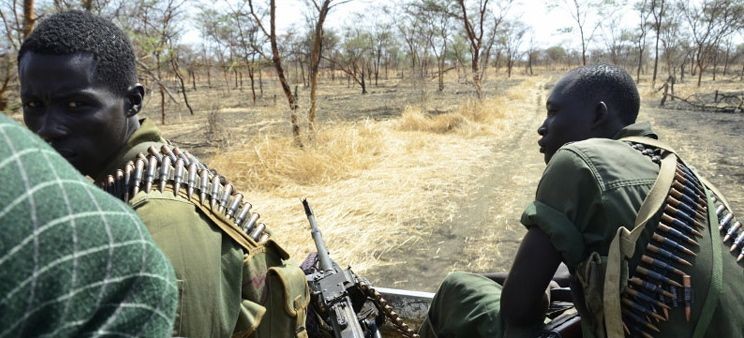The Sudanese People’s Liberation Movement-North (SPLM-N) in Blue Nile state is ‘weak’ and cannot measure up to the Sudanese army, concludes a report on the war in Blue Nile. It also reports a lack of evidence of the allegation that South Sudan supports the SPLM-N.
The research group Small Arms Survey published an analysis about the conflict between the SPLM-N and Sudan in the Blue Nile on Thursday. ‘Blue Nile is likely to remain an unpredictable and volatile environment in the long term, if Sudan and South Sudan cannot find a solution,’ it concluded.
Observers and SPLM-N representatives considered the 2nd Division, the only anti-government force in Blue Nile, weaker than others, researchers found. From September 2011 to June 2013, the Sudanese government and its allied forces had the odds in the Blue Nile conflict, with one of the reasons being its aerial supremacy over the SPLM-N Second Division.
The division could only capture a limited amount of the military hardware from the Sudanese Armed Forces (SAF) and security stores, which reduced its strength to challenge the Sudanese government. The SPLM-N had to avoid armed confrontations as much as possible. The rebels also ‘operated in complete isolation from the Sudan Revolutionary Front forces’, the report stated. A number of SPLM-N officers serving on the Blue Nile front said that ‘a weak chain of command’ was one of the major weaknesses of the movement.
Meanwhile in South Kordofan, the SPLM-N First Division could capture enough hardware from the Sudanese stockpiles to secure a constant supply of ammunition from 2011 to 2013. Hardware captured by the Second Division included mainly Warsaw Pact-calibre weapons and seized arms and ammunition of more than ten years old.
South Sudan’s support ‘unclear’
The researchers could not find hard evidence on the allegation that South Sudan, and its Sudanese People’s Liberation Army (SPLA), supports the rebels in Sudan. In Blue Nile, they did observe the SPLM-N troops using vehicles with SPLA licence plates. Observers could not clarify if these items were offered recently. ‘Direct support to the SPLM-N seems to have ceased shortly after the Blue Nile conflict resumed in September 2011,’ they said.
‘The crisis in Blue Nile is primarily an internal Sudanese conflict rather than an aspect of wider North–South tensions,’ the report stated. Though over time, the conflict in Blue Nile became more linked to border tensions, since the SPLM-N is in control of areas along the border. Also, SPLM officers in Juba have acknowledged that they support the Second Division out of a moral obligation.
The conflict in the Blue Nile has extended food insecurity for civilians, according to the report. By November 2013, some 154,000 people had settled in refugee camps in South Sudan and Ethiopia. In addition, between 80,000 and 100,000 individuals were internally displaced inside SPLM-N controlled areas.
‘Sudan has refused political negotiations with the SRF’, the Small Arms Survey concluded, thus ‘showed its partiality toward a military solution’. This approach is successful in Blue Nile, as the SPLM-N is weaker there and operates practically on its own, according to the report.
File photo: SPLA-N soldiers in Blue Nile State (Tomo Kriznar)
Related:
‘Malnutrition and worsening health in rebel-held Blue Nile, Sudan’ (15 December 2013)
Fierce clashes between Sudanese army and SPLM-N in Blue Nile state (15 December 2013)




